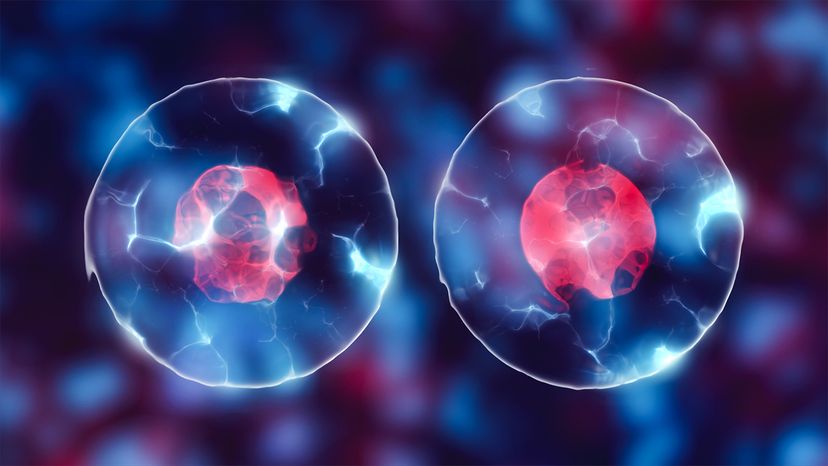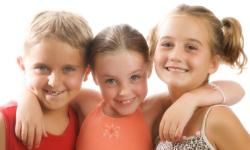One exercise Jackson does in his biology classes involves taking two sentences and calling them "chromosomes." For the sake of this article, we made Sentence 1 bold to make it easy to follow its path through the processes of mitosis and meiosis.
Both these sentences describe basically the same idea, but Sentence 1 (an egg cell, with 23 chromosomes) comes from the female parent (in bold), and Sentence 2 (a sperm cell, also with 23 chromosomes) comes from the male parent.
Sentence 1: Imagine a rabbit hiding in the bushes.
Sentence 2: Conceptualize a hare cloaked in vegetation.
Both mitosis and meiosis start from here and duplicate the DNA, giving us two of each sentence.
Imagine a rabbit hiding in the bushes.
Imagine a rabbit hiding in the bushes.
Conceptualize a hare cloaked in vegetation.
Conceptualize a hare cloaked in vegetation.
The next step of mitosis separates the duplicates, and then sorts them back out to create twin cells that each contain genetic material inherited from both mother and father. Those can later make duplicates of themselves that are pretty much exactly like the duplicates your red blood cells or liver cells made last year or 20 years ago.
Imagine a rabbit hiding in the bushes.
Conceptualize a hare cloaked in vegetation.
Imagine a rabbit hiding in the bushes.
Conceptualize a hare cloaked in vegetation.
The first stage of meiosis, (scientifically known as Meiosis I), takes the duplicated DNA that marks the beginning of the mitosis process, copies it, which results in two daughter cells, each containing with full sets of chromosomes and then shuffles them up like a deck of cards:
Conceptualize a rabbit hiding in the vegetation.
Imagine a hare cloaked in bushes.
Imagine a rabbit cloaked in bushes.
Conceptualize a hare hiding in the vegetation.
The first step (scientifically known as Meiosis I) is when a single cell is copied resulting in two daughter cells, each containing a full set of chromosomes.
Conceptualize a rabbit hiding in the vegetation.
Imagine a hare cloaked in bushes.
Imagine a rabbit cloaked in bushes.
Conceptualize a hare hiding in the vegetation.
The second step (scientifically known as Meiosis II) then separates the new daughter cells, putting each into its own cell, leaving four cells with different DNA in each.
Conceptualize a rabbit hiding in the vegetation.
Imagine a hare cloaked in bushes.
Imagine a rabbit cloaked in bushes.
Conceptualize a hare hiding in the vegetation.
"Each sentence says the same thing, but with different versions of each word — each version being an allele, in DNA speak," says Jackson. "Each allele is a mix of words from the male and female parents."


